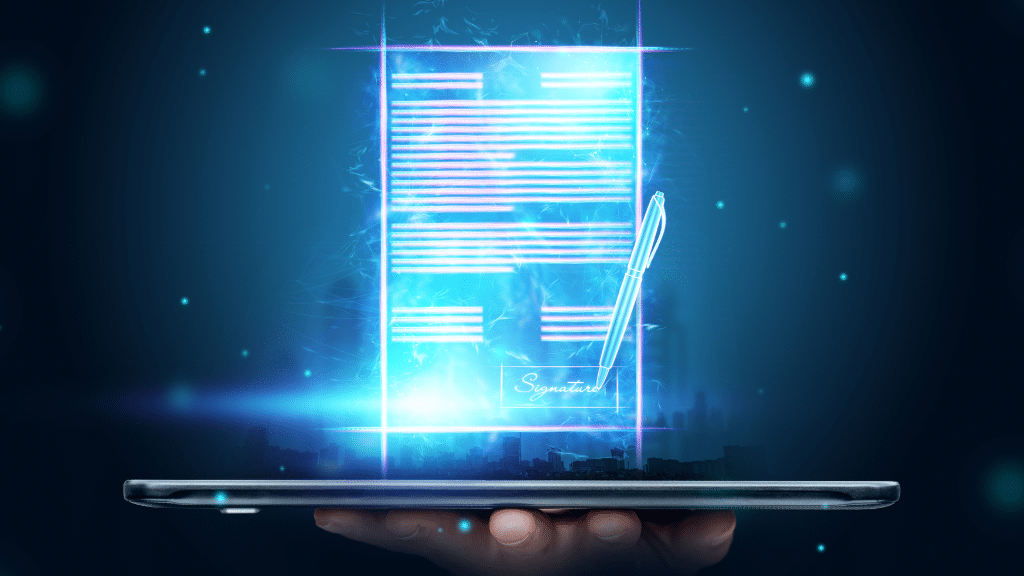Nowadays, the authenticity and security of electronic documents is essential. When we talk about signing documents digitally, many people confuse terms such as digital signature and mechanical signature, which although they may seem similar, represent different processes and levels of security. In this article, we will analyze the key differences between digital signature vs mechanical signature, their characteristics, uses, and how they impact the validity of electronic documents. We will also see how the digital signature integrates into the Digital Credentials ecosystem, offering a higher level of security and authenticity.
What is a Digital Signature?
A digital signature is a type of advanced electronic signature that guarantees the authenticity, integrity and non-repudiation of a digital document. It is created through a cryptographic process that uniquely links the signer to the content of the document, ensuring that it has not been altered after being signed.
Importance of Digital Signature:
Digital signature is crucial in legal documents, contracts and other processes where information security is required. This type of signature guarantees:
- Authenticity: The document really comes from the person who signs it.
- Integrity: The document has not been altered after signing.
- Non-repudiation: The signatory cannot deny his signature once it has been made.
Example of Digital Signature in real use:
Let’s imagine a university that issues digital academic certificates. Thanks to digital signatures, these documents maintain their validity and authenticity even if they are shared or stored in the cloud, allowing students and employers to have complete confidence in their integrity.

What is a Mechanical Signature?
La mechanical signature A digital signature is a reproduction of a handwritten signature as an image or digital copy. Although it resembles the person’s signature, it does not incorporate the elements of authenticity or the security mechanisms offered by a digital signature. A mechanical signature can be easily created and duplicated by a computer, but it lacks the attributes that would ensure its integrity and authenticity, leaving it vulnerable to modification and fraud.
Importance of the Mechanical Signature:
Although not as secure as digital signatures, mechanical signatures are still useful in certain contexts. They are mainly used for low-risk documents, where a high level of verification is not required.
Example of a Mechanical Signature in real use:
A common example is the use of mechanical signatures on purchase receipts. Many companies print a representative’s mechanical signature on receipts, but this type of signature does not provide any additional verification and can be forged.
Benefits of Digital Signature vs. Mechanical Signature
- Safety: Digital signatures use cryptographic algorithms that ensure the authenticity and integrity of the document, something that a handwritten or mechanical signature cannot guarantee. This is particularly important in corporate, academic or financial environments.
- Ease of use and time saving: With digital signature, documents can be signed and sent instantly, without the need to print, scan or physically send the document.
- Legal validity: In many countries, digital signatures are legally binding, meaning they can be used on contracts, agreements, and other formal documents without requiring a handwritten signature.
- Environmental impact: By avoiding the need to print documents, digital signatures help reduce the consumption of paper and other physical resources, making them a more sustainable option.
The role of the Digital Signature in Digital Credentials
The digital signature plays a complementary role in the field of Digital Credentials. For example, when an educational institution issues a digital diploma, the digital signature ensures that the document has not been altered and is officially valid. This not only gives confidence to employers who verify the document, but also protects the reputation of the issuing institution.
Why is digital signature important in Digital Credentials?
With digital signatures, each credential can be cryptographically linked to the identity of the issuer, ensuring that no one else can modify the document without being detected. This is crucial when students, employees and professionals present these credentials in selection, evaluation or professional development processes:
Verification and traceability process:
Thanks to the digital signature, employers or institutions that receive a Digital Credential can quickly and securely verify the authenticity of the document. Using a Digital Credentials issuing platform, such as AcredittaThe digital signature guarantees that the credential is legitimate and comes from the entity that issued it, thus eliminating the risk of fraud or alterations. This is achieved through cryptographic algorithms that protect the content, making any changes immediately detected.
Additional benefits for credential management:
In addition to ensuring authenticity and preventing counterfeiting, digital signatures facilitate the secure management and storage of large volumes of Digital Credentials. Digital Credentials Platforms with built-in digital signatures allow organizations to manage these documents in an organized, secure and accessible manner. This feature not only improves efficiency in credential management, but also helps comply with data protection and information security regulations and standards.
In conclusion, the choice between digital signature vs. mechanical signature depends largely on the level of security and authenticity required. While the mechanical signature may be sufficient for simple documents, the digital signature is essential for formal and highly secure documents. With the increasing implementation of Digital Credentials, the digital signature is positioned as an indispensable resource, guaranteeing the integrity and veracity of documents in an increasingly demanding digital environment.
Are you interested in learning more about how to implement digital signatures in your organization’s certificates? Write to us at info@acreditta.com and find out how we can help you strengthen the authenticity of your documents!
Subscribe to blog here and receive all our content







